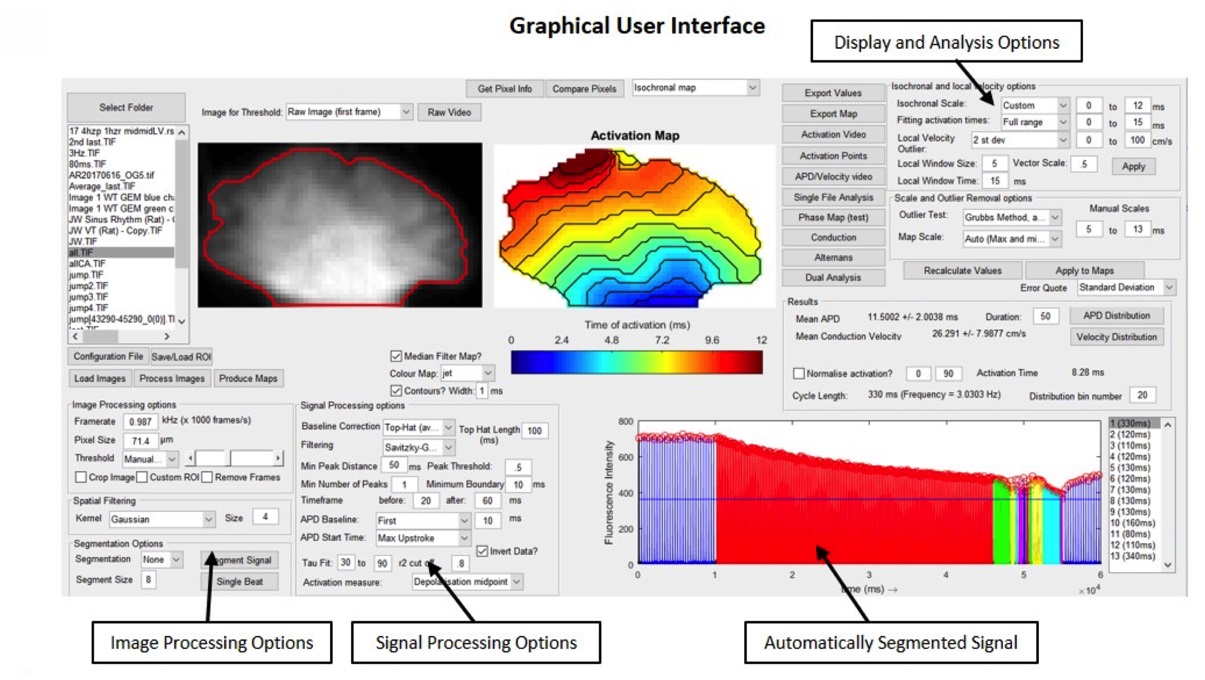
Heart disease remains one of the leading causes of death globally. In most cases, heart disease affects the electrical function of heart which can lead to potentially lethal irregular heart-beats, called arrhythmias.
Our understanding of the complex workings that shape the electrical function of the beating heart is still insufficient to prevent these common and often devastating diseases.
Powerful methodologies allowing recording of electrical activity of the heart across thousands of measuring points with millisecond resolution already exist. However, lack of software for analysis of this data is preventing important insights that would allow development of new and effective prevention and treatment strategies for heart disease patients.
Researchers based in the Institute of Cardiovascular Sciences have devised a new software called ElectroMap, which processes and analyses complex electrical data. ElectroMap has been designed to support preclinical research but initial proof-of-principle study also demonstrated potential application of ElectroMap for detection of sites of arrhythmic activity in a patient with atrial fibrillation, most common arrhythmia.
PhD student Christopher O’Shea, on an EPSRC doctoral training programme in Physical Sciences for Health, who designed the software, commented: “Together with my supervisors, Dr Davor Pavlovic and Dr Kashif Rajpoot, we have spent almost three years working with a team of scientists and clinicians on developing this software platform. It was a hugely enjoyable experience and I look forward to seeing ElectroMap applied to inform our understanding of life-threatening arrhythmias and development of novel prevention strategies.”
Lead researcher Dr Pavlovic said: “We have primarily designed ElectroMap for use in preclinical research and this is where I predict that it will be used most frequently, to aid understanding of heart disease and support development of new therapies. However, ability to detect a particular site of arrhythmia in a patient, opens up an exciting possibility for the use of ElectroMap in guiding ablation in patients with complex chronic arrhythmias, which could save lives in a more immediate future.”
Professor Paulus Kirchhof, Director of the Institute of Cardiovascular Sciences, added: “It took a concerted multidisciplinary effort across the Midlands to create this versatile new software. We make this software and the source code available to use for everyone. I hope that this effort helps researchers around the world to better understand why some hearts develop arrhythmias, and others do not. It will certainly improve our daily analytical work in the group.”
- Research in the Institute of Cardiovascular Sciences
- To read more about the ElectroMap software please see this recent publication
- Follow the Institute of Cardiovascular Sciences on Twitter